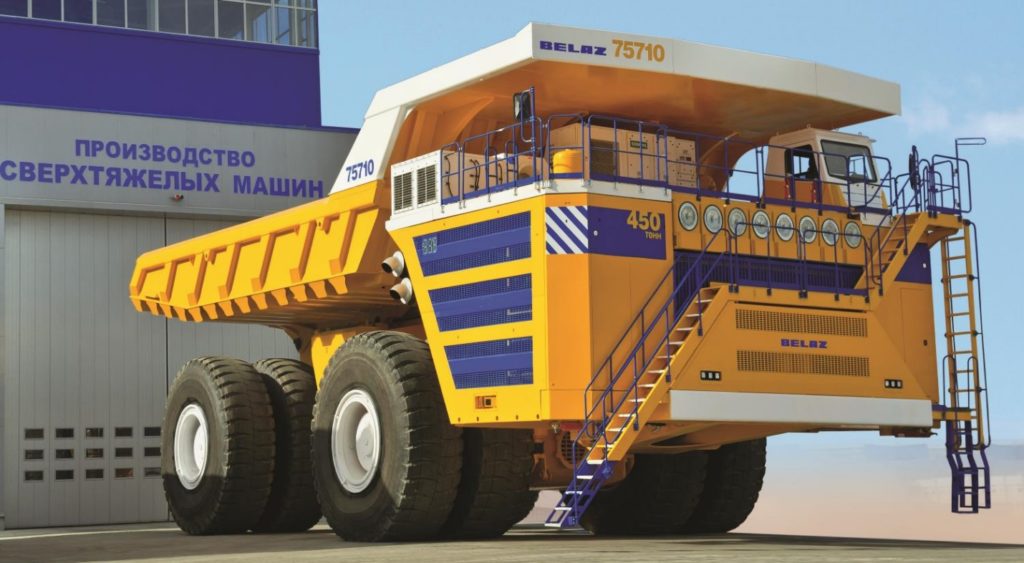Aleksandr Egorov has devoted more than 40 years of his life to work at Belaz, with more than a half of this period being involved into research, development and implementation of many ambitious engineering projects including, but not limited to, development of the 240-t and 360-t trucks, development of the autonomous truck, development of the first in the world 90-t truck with electric drive. He was in charge of all of these projects, demanding development of a great many unique technical solutions, but none of them was as demanding as the project to develop the mining dump truck BELAZ-75710 with payload capacity of 450 t.
One of many considerations behind this project is connected with the consequences of the global financial crisis when production of commercial minerals was decreasing together with commodity prices. It was seen that mining companies would need new equipment with higher payload capacity, capable of moving larger volumes of minerals in one cycle, providing lower operational cost due to fuel efficiency, in order to keep operations productive and economic.
The first attempt to create an ultra-high payload capacity dump truck (more than 400 t) was made by the engineering team under Egorov back in 1997-98. The concept was developed in response to the request made by Chilean copper mining company Codelco. However, although the concept was approved by the customer, its practical realization was not feasible due to the unique design of many components together with various limitations of manufacturing capabilities.
In 2013 the first pilot truck was manufactured and the first trials at the factory testing grounds proved the correctness of the applied technical solutions for the design of this truck. Field testing in tough operational conditions in the Kuzbass region (Russia) revealed further benefits of the truck design, including 15% better fuel economy due to optimal settings of engine-alternator units (when driving without load the truck automatically switches to using only one engine) compared to 360-t Belaz trucks working in the same mine. Dynamic unloading due to powerful hydraulic drive helped compensate for the additional time for loading of the larger volume body. Initial concerns in regard to tyre wear due to the use of four dual tyres proved to be wrong. Application of innovative steering kinematics provided excellent manoeuvrability and showed 10% decrease of tyre wear compared to the traditional 2×4 wheel arrangement of the mining trucks operated in the same conditions.
This decision by the judges around the world was a close-run determination with Dr Shahram Tafazoli, President and CEO of Motion Metrics International developer of an advanced vision-based system to monitor shovel bucket teeth, ToothMetrics™.











